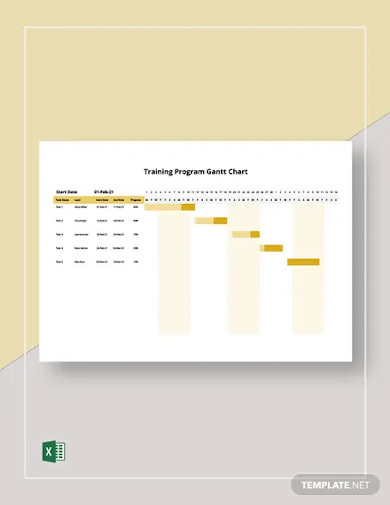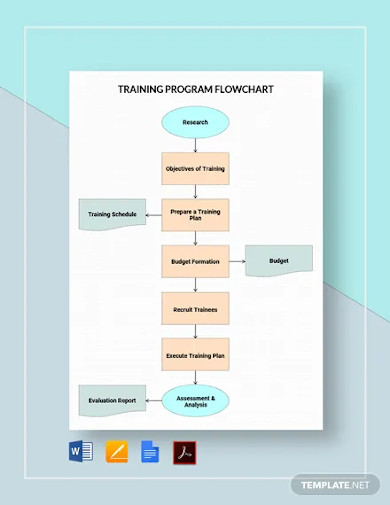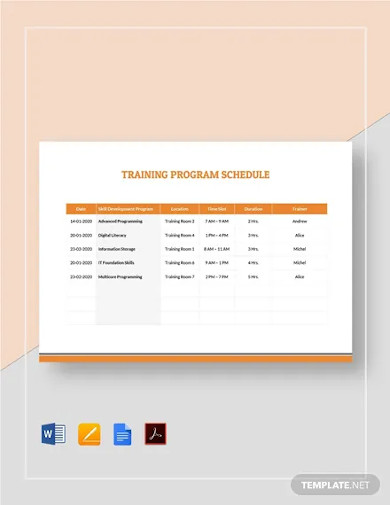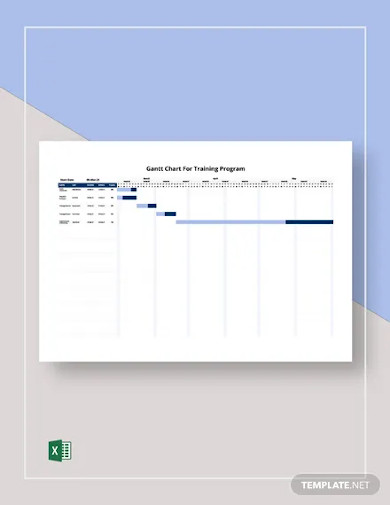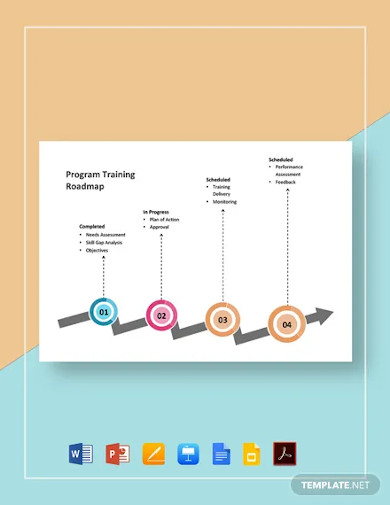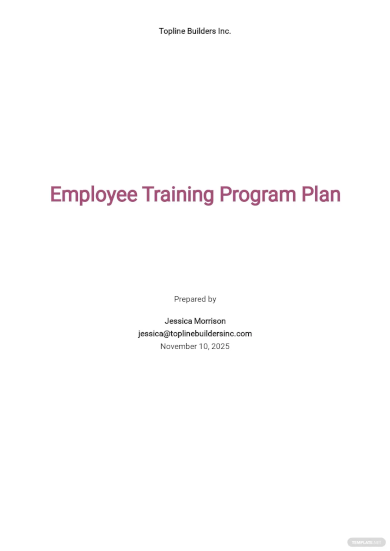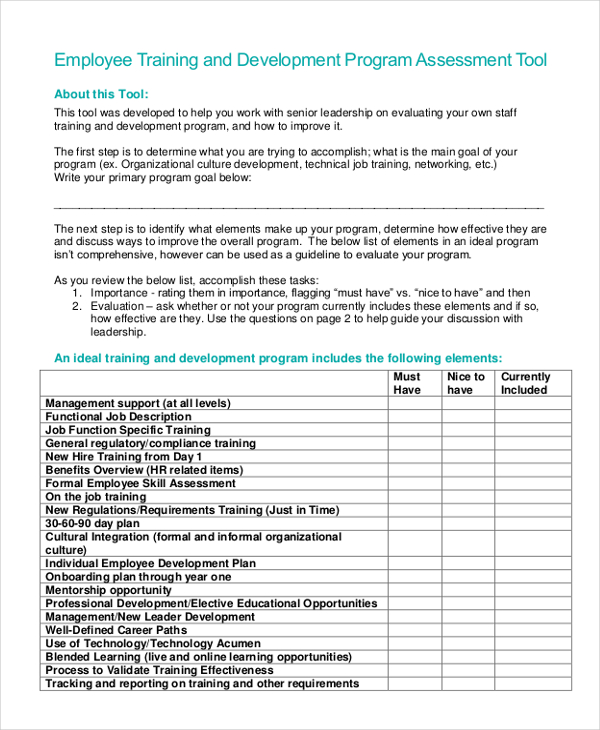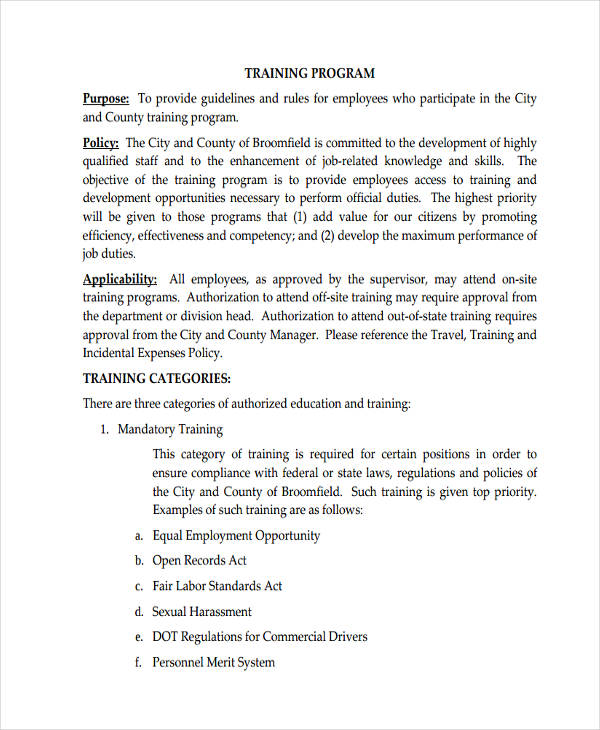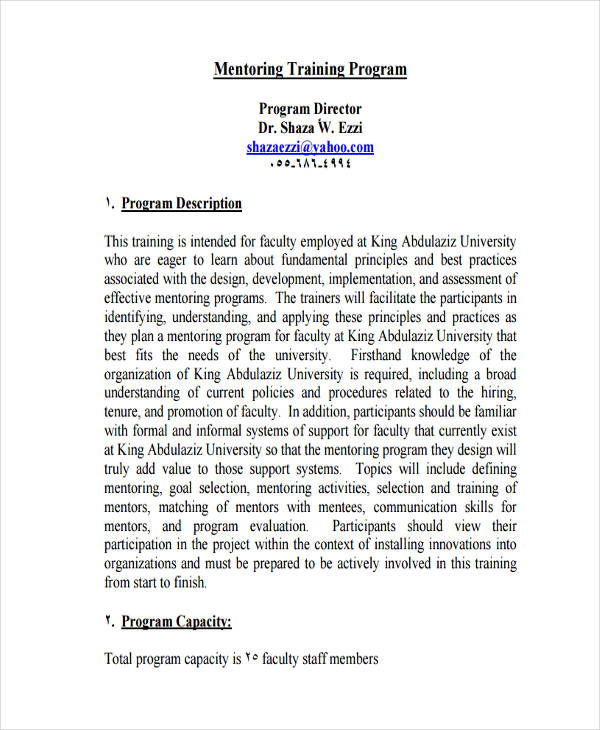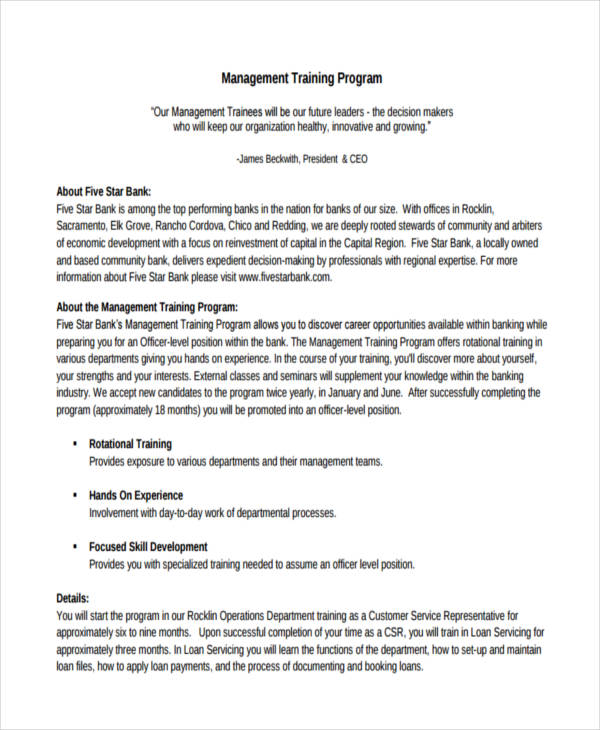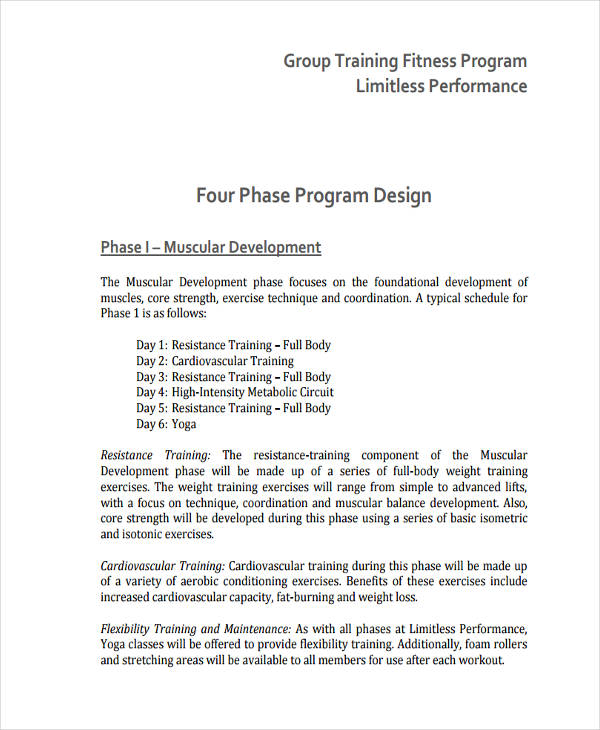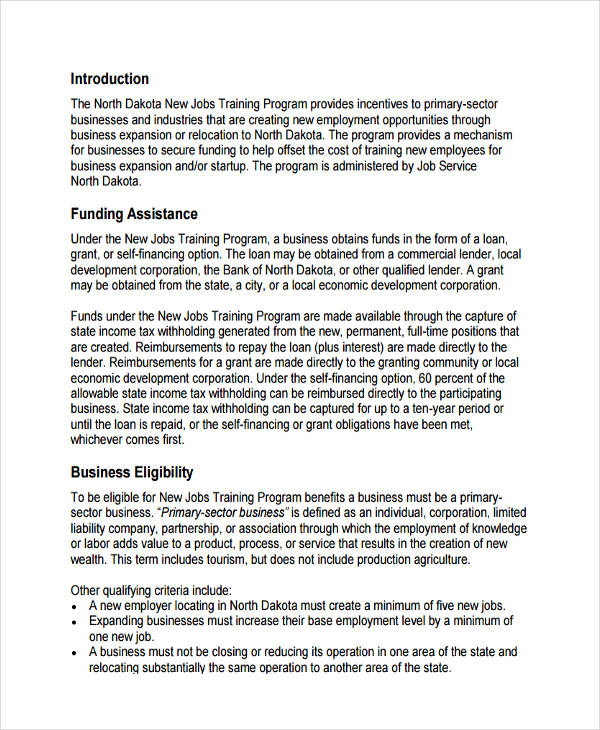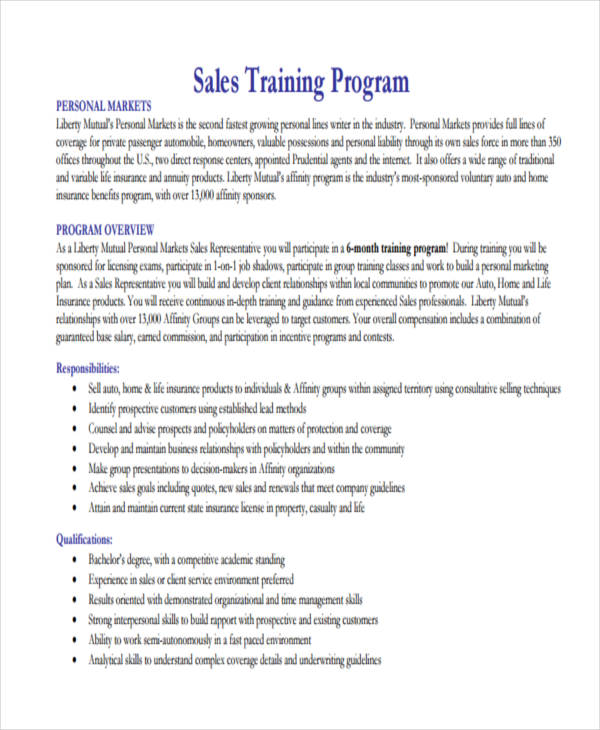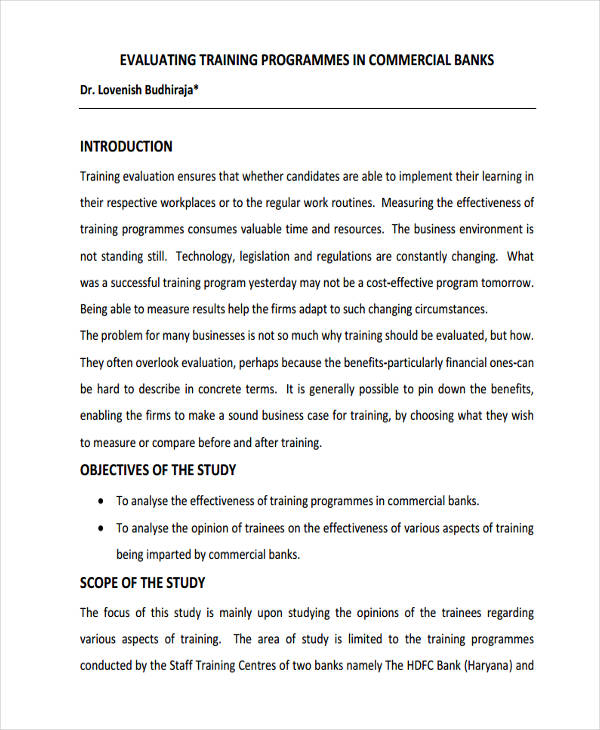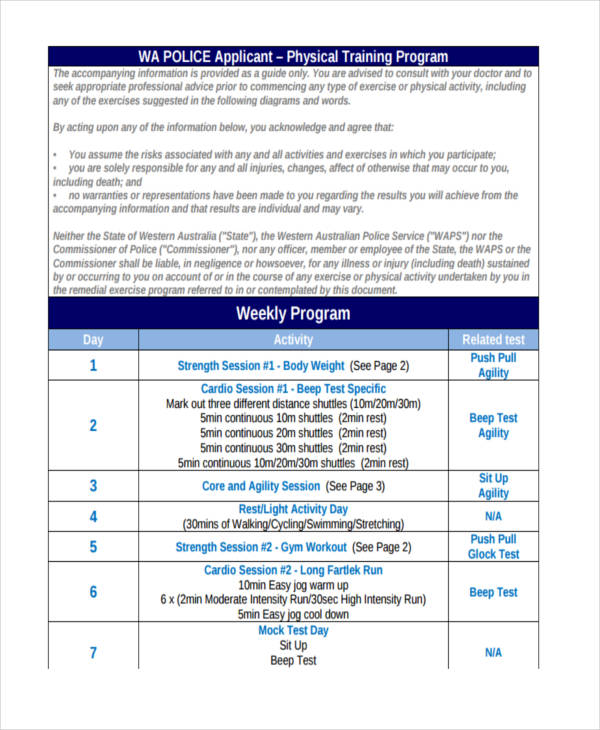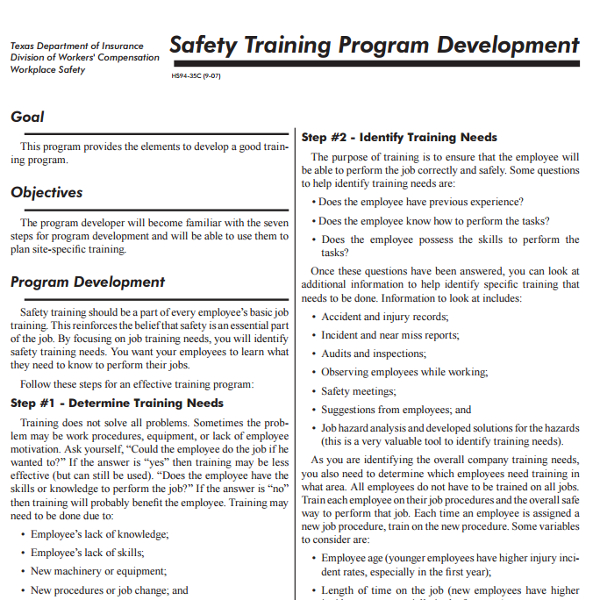20+ Training Program Examples to Download
If you are a part of a team of individuals with different writing skills and potentials, you are probably aware that they need to be developed in a way that will enable them to grow professionally. Such skills and potentials can also be a great asset to the organization.
In the presence of various individuals with different potentials, managers or office heads usually feel the need to plan for a training, which, if done properly will help such individuals improve their potential.
18+ Training Program Examples
Training Program Gantt Chart Template
Training Program Flowchart Template
Training Program Schedule Template
Gantt Chart for Training Program Template
Training & Development Program Mind Map
Program Training Roadmap Template
Training Program Proposal Template
Training Program Plan Template
Training Program Achievement Certificate Template
Employee Training Program
Training Program Example
Mentoring Training Program
Management Training Sample
Fitness Training Program
Basic Training Program
Sales Training Program
Evaluating Training Sample
Physical Training Program
Sample Training Program
Safety Training Program Development
Importance of a Training Program
A training program example is often undertaken by a group of individuals (e.g. employees of a company) and targets the improvement of specific skills.
A training program is a vital process which needs to be undertaken by specific members of a certain organization typically to improve their individuals skills, and develop their productivity as a team. Training programs are often required by different office heads so that their members, especially the new ones, will be able to grow, and with such growth help the organization’s development. You may also see program management examples & samples.
Advantages and Disadvantages of a Training Program
The agenda of training is to aim to improve the employees for the betterment of the whole organization. Other than that, here are some advantages of conducting a training program:
- Improves employee competency and productivity.
- Motivates employees.
- Reduces employee supervision.
- Increases employee adaptability.
- Promotes innovative thinking.
- Lessens employee turnover.
- Enhances employee-employer relationship.
- Encourages team work.
- Increases employee self-confidence.
- Discovers new skills and talents.
You may also like implementation plan examples & samples.
However, one must also be mindful of some advantages of a training program:
- Having improved, employees might leave for jobs that offer good salary.
- Training programs waste time and financial resources.
- Training programs might have uncertain results.
- Same training program for different training needs.
- Training programs can get really boring, and your employees might lose interest.
You may also check out memorial program examples & samples.
How to Develop a Training Program
In developing training programs, a manager or office head needs to ensure its efficiency. There are several things to keep in mind if you want to develop an effective training program. Here are some of such things:
1. Set goals and objectives.
These will be the things you need to meet in order for your training program to be a complete success. Smart Goals and objectives serves as an end goal, along with your desired outcomes.
2. Assess employee skills.
Observe the current skills of your member or employees, and know how your training program can help in improving such skills.
3. Identify training needs.
Identify what your members or employees need to know or learn, and how will the learning benefit them and the organization as a whole.
4. Devise a training plan.
Training plans need to include specific training elements which will guide you and your participants throughout the whole training program.
5. Hire training experts.
These are the people who knows the topics to be discussed, and will be the one to guide your participants through the training program.
6. Evaluate training.
Evaluate the key factors which affected the flow of your training program. You may also see training agenda examples & samples.
7. Revise and polish for improvement.
As you go, you will learn the different ways of conducting a training program, so do your revisions from time to time.



